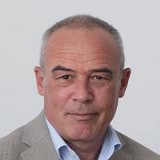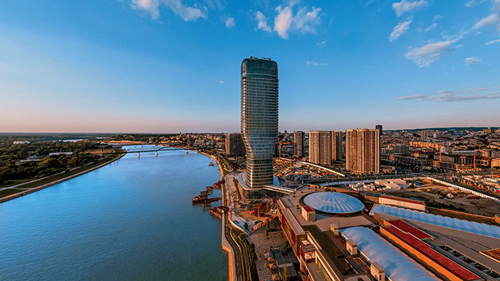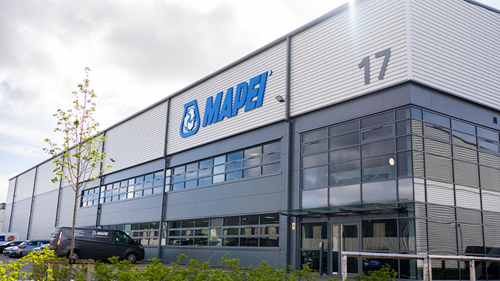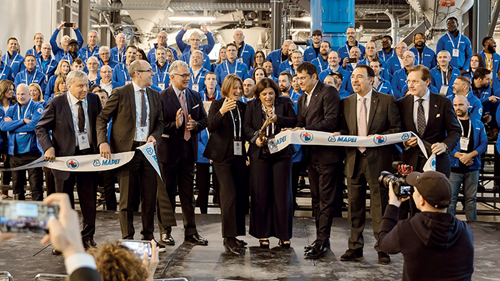
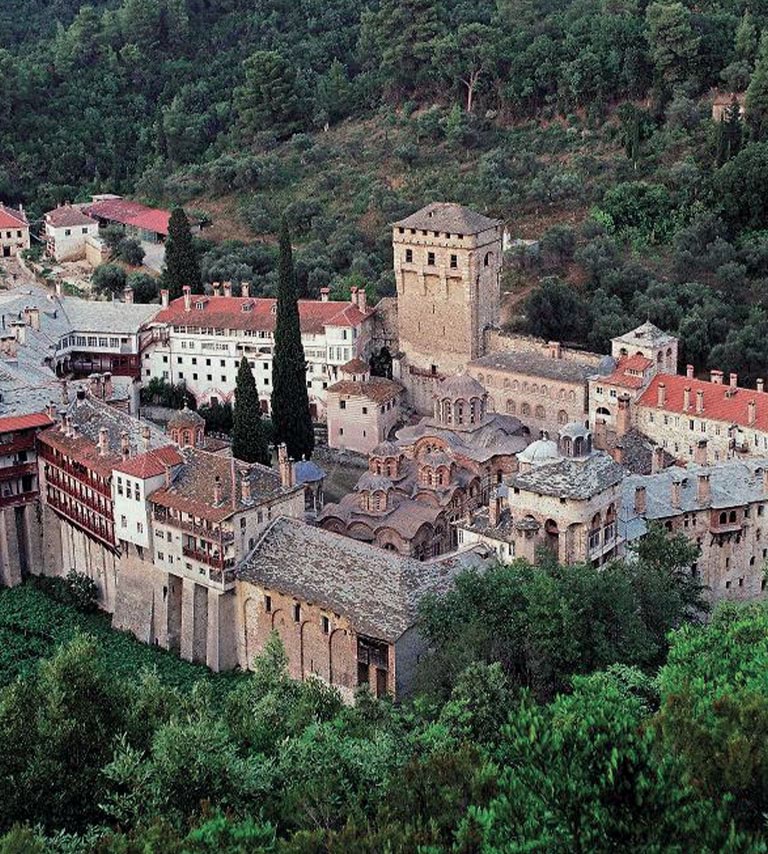
Mapei around the World
Interviews
/
4/26/2024
A leading player for its quality and excellence
Nenad Cvetković, General Manager of Mapei Serbia: the strength of our brand is recognised throughout the building industry
Mapei Serbia is recognised as being a reliable partner that can offer the Serbian market a wide range of products. As far as the future is concerned, this subsidiary of the Mapei Group expects to be able to stand out even more as a leading player in the sector by launching innovative technological solutions.
In extremely competitive building industry, which are the sectors where Mapei has already established itself and which will it be investing in and focusing on in the future?
The company has found a great niche at the high end of the Serbian building industry, the quality products sector. Over the years, our aim has always been to meet the needs of the market by working closely with the professionals who use our materials. We have created synergies between Mapei and the main players in the building industry, gaining the trust of our business partners. Mapei Serbia is now recognised as being a reliable partner that can offer a wide range of products. As far as the future is concerned, we count on being able to stand out even more as a leading player in the sector by launching innovative technological solutions developed in our Research & Development laboratories.
What are Mapei products most widely used for in the private and housing construction sector: the reconstruction and renovation of houses or new builds?
In Serbia, our products are mainly involved in high-rise projects, apartment blocks or large residential complexes. However, they are also used for infrastructures. We do not intend to confine ourselves to any single sector: we operate in every realm of the building industry and are willing to work with everyone who appreciates quality, recognising the excellence of our products and services.
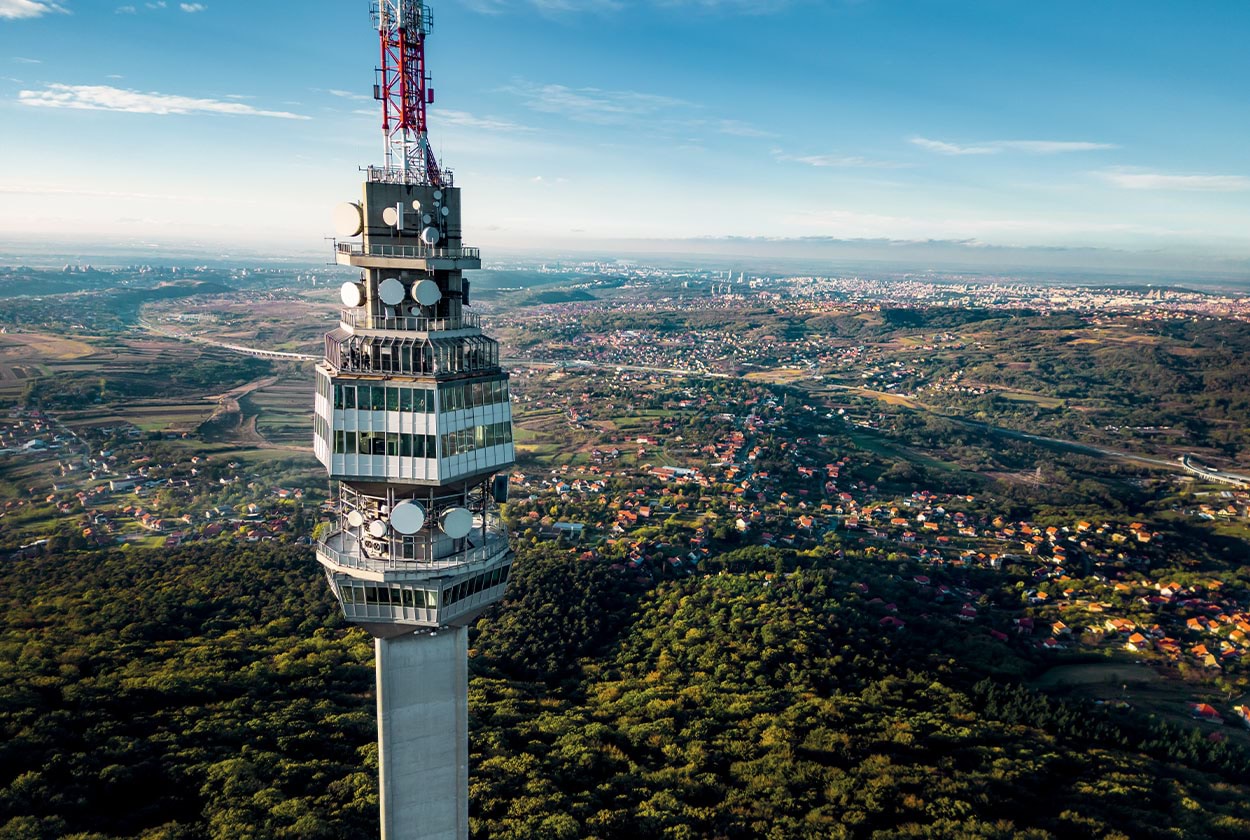
Mapei contributed to numerous prestigious projects in Serbia such as the reconstruction of the TV tower on Avala Mountain in Belgrade.
Serbia has ambitious plans in the field of infrastructure involving the construction of new motorways and the modernisation of rail transport: what opportunities are opening up for Mapei?
Serbia has been investing, and will continue to invest, significantly in infrastructures for some time now: motorways are being built and the railway network is being modernised to cater for high-speed trains. Building is in fact the driving force behind our economy and our country, due to its geographical position at the centre of the Western Balkans. There is, understandably, plenty of investment in infrastructures to improve links with neighbouring countries and transport within our own land. This means there are exceptional opportunities for Mapei to be involved in the development of roads and railway lines.
Due to its geographical location, Serbia is an important hub for the distribution of Mapei products in the Western Balkans
Mapei has no manufacturing plants in Serbia: from a business viewpoint, could it be a hub for distribution in this region of the Balkans?
As already mentioned, Serbia's geographical position puts it at the crossroads of important transport routes. In addition to this strategic geographic advantage, Serbia's excellent relations with its neighbours are also worthy of note. Given these factors, it is clear that Serbia functions as a central hub for the distribution of Mapei products in most of the territories in the Western Balkans.

Mapei contributed to numerous prestigious projects in Serbia such as the renovation of the paving in Karađorđeva Street in the centre of Belgrade.
In 20 years in business (and 10 years with a subsidiary), Mapei has contributed to prestigious building and renovation projects in Serbia. Could you share some of them with our readers?
As I have been with the company since it was first established, I can remember many projects and works carried out at various times in the history of Mapei in Serbia. In the early days, we took part in the reconstruction of the Administrative and Appeals Court in Belgrade and the redevelopment of the building housing the Faculty of Law. We were then involved in the renovation of “25. May - Gale Muškatirović” Sports Centre, helping with the renovation of the outdoor swimming pools. This was followed by the reconstruction of the TV tower on Avala Mountain in Belgrade, for which we supplied super-plasticising concrete admixtures that helped reduce the time required to complete the work. We also worked on numerous hotels, such as the Crown Plaza in Novi Beograd, and various infrastructure projects such as the famous Ada bridge and the renovating of the paving in Karađorđeva Street in the centre of Belgrade. Among the hundreds of projects we can claim as 'references', a special mention goes to the renovation of St Sava Temple in Belgrade.
Mapei materials have been used for monasteries, churches and other religious buildings, all of which are now recognised as part of the nation’s historic-artistic heritage. What does it mean for Mapei Serbia to be involved in these projects?
Our involvement in buildings of great cultural importance is partly thanks to the support we have received from our parent company, Mapei SpA, which has been developing specific products for the renovation of historical buildings for many years. We have taken advantage of their experience and expertise, which we make available to our clients not just in the form of our products but also through specific solutions and systems. We gauge the compatibility between modern products and (often very) old surfaces, offering the most technically viable solutions. In addition to the renovation of St. Sava Temple, we have also contributed to the renovation of the Hilandar Monastery in Sveta Gora, which had been damaged by a major fire, the reconstruction of monastery buildings in Visoki Dečani in Deçani, Kosovo and the reconstruction of the monumental stairways in Kalemegdan Park and the restoration of the façades of King's Church in Studenica Monastery.
Belgrade has ambitious plans for investment in infrastructures: this prospect offers great opportunities for us

Mapei contributed to numerous prestigious projects in Serbia such as the restoration of the Hilandar Monastery in Sveta Gora.
What marketing strategies do you adopt to strengthen the Mapei brand in Serbia?
Our main aim is to gain the trust of people working in the Serbian building industry. The greatest contribution to achieving this goal comes from the Mapei Serbia team, which over the years has helped create the great image Mapei now has in the Serbian building industry.
When we ask our clients why they chose to work with us, the answer comes immediately: for the reliability of our team and our products/solutions. I believe that the greatest success we have achieved over the last 20 years is the team we have 'built'. Our goal is to train people who will continue this work in the future, continuing to improve our business model. When we select aspiring candidates for positions in our team, we look for people who are interested in teamwork because, without this distinctive trait, we could not achieve the results we aspire to. My motto is “A team is not a group of the best people but a group of people who work best together”. This is precisely why we are seen as a desirable, authentic employer on the Serbian market that is genuinely interested in the professional careers of its staff.
Belgrade has ambitious plans for investment in infrastructure: this prospect offers great opportunities for us. Due to its geographical location, Serbia is an important hub for the distribution of Mapei products in the Western Balkans.





